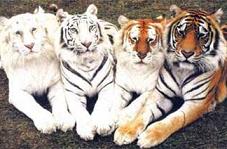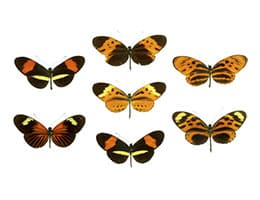VARIABILITY
Variability is the property of that which is variable . This adjective, which comes from the Latin word variabĭlis , refers to what varies, changes or is modified . For example: "Today's great climate variability is a consequence of human pollution" , "I recommend that you check with different banks before taking out the loan: there is a significant variability of the conditions according to the entity " , " The variability of symptoms makes it a difficult disease to diagnose . "

Genetic variability is called the changes that are registered in the genes of a species or a population. This variability is a consequence of the natural selection process , which develops when nature selects different alleles that are modified so that the species can evolve.
In this way, the greater the genetic variability, the greater the speed in the development of evolutionary changes. Importantly, genetic variability can be caused by the combination of genes or by mutation in a deoxyribonucleic acid ( DNA ) sequence . Let's look at these two sources of genetic variability that urge sexual reproduction below, in more detail:
Mutation
It is about any change that takes place in a DNA sequence. Among the causes of this phenomenon are failures during replication, or the intervention of chemicals or radiation found in the environment. It is important to note that a mutation does not necessarily affect the phenotype of a living being, that is, its biochemical, behavioral and physical traits.
This can be verified by observing that a DNA codon that has been modified to GGU from GGA encodes glycine, the same amino acid, that is, it does not affect the phenotype. A codon, for its part, is the fundamental unit of information used to translate mRNA (messenger ribonucleic acid); It is a nucleotide triplet, capable of encoding an amino acid.
On the other hand, there are numerous examples of mutations in which a modification of the phenotype does take place. In some of these cases of genetic variability, it may be that the resulting organism is not suitable for survival , or that its biological efficacy is reduced compared to that of its predecessor.
Gene combination
Much of the inherited differences can be explained by the combination of genes that takes place while the gametes reproduce. It is important to note that in a homologous pair of chromosomes, each of them has independence to move during meiosis (one of the ways in which cells reproduce).
 For this reason, the 23 pairs of chromosomes found in the human body are capable of giving 8,400,000 different combinations of genes . Another process that occurs at the same time as meiosis is called crossing , and this increases the number of diverse genotypes that can arise as part of the offspring.
For this reason, the 23 pairs of chromosomes found in the human body are capable of giving 8,400,000 different combinations of genes . Another process that occurs at the same time as meiosis is called crossing , and this increases the number of diverse genotypes that can arise as part of the offspring.
When the recombination of alleles occurs in the context of sexual reproduction, they can give rise to phenotypes of great diversity, and this explains why this type of reproduction is an important source of genetic variability in so many populations.
Other concepts
The stellar variability , on the other hand, refers to the changes in brightness of stars . These alterations take place over time in certain stars, although most of them maintain a stable luminosity. Stars that show variability are known as variable stars.
In an economy with inflation , finally, there will be variability in prices . A product that costs 10 pesos one day , one week later it can cost 12 pesos and two weeks later, 16 pesos .
Comments
Post a Comment